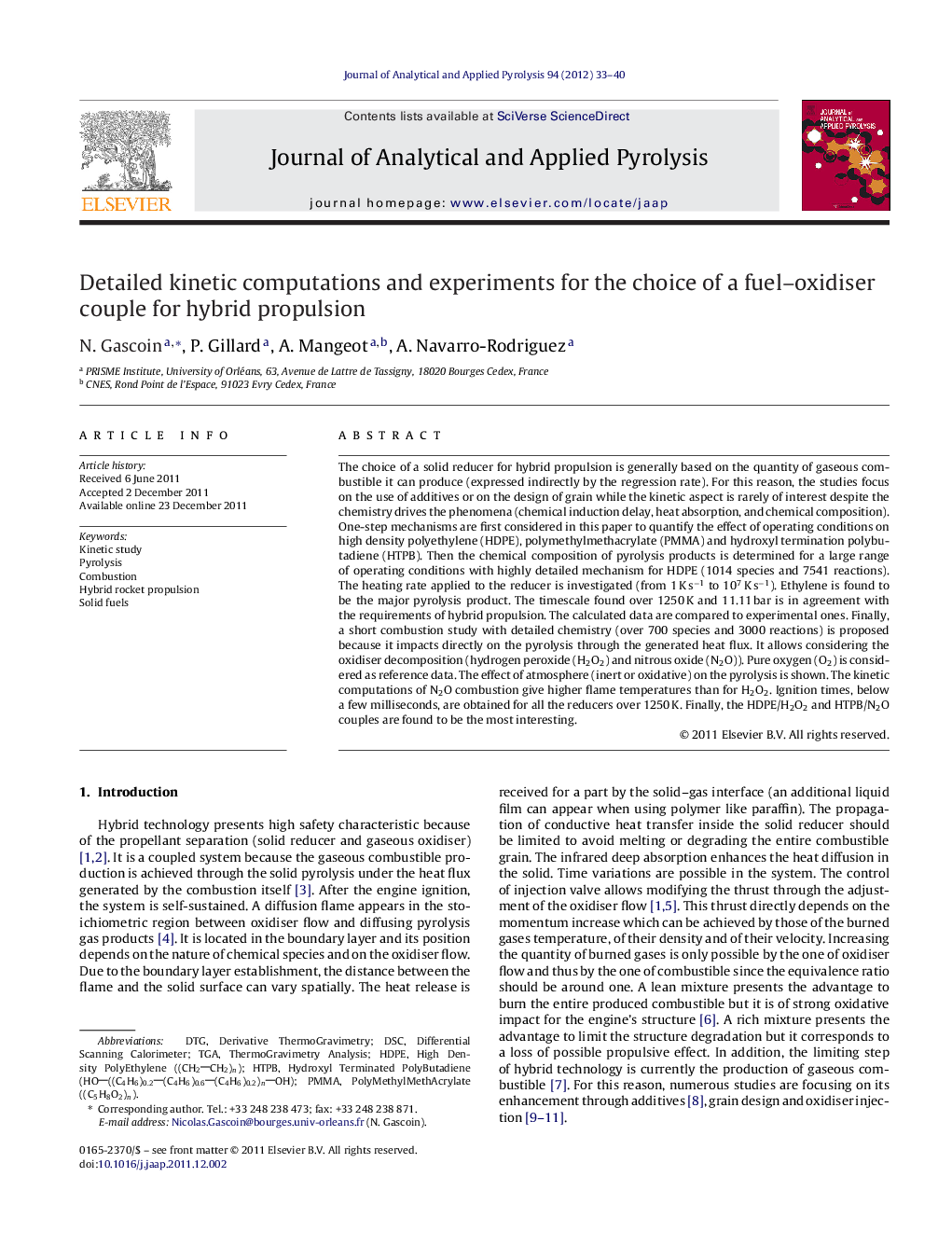| Article ID | Journal | Published Year | Pages | File Type |
|---|---|---|---|---|
| 1197417 | Journal of Analytical and Applied Pyrolysis | 2012 | 8 Pages |
The choice of a solid reducer for hybrid propulsion is generally based on the quantity of gaseous combustible it can produce (expressed indirectly by the regression rate). For this reason, the studies focus on the use of additives or on the design of grain while the kinetic aspect is rarely of interest despite the chemistry drives the phenomena (chemical induction delay, heat absorption, and chemical composition). One-step mechanisms are first considered in this paper to quantify the effect of operating conditions on high density polyethylene (HDPE), polymethylmethacrylate (PMMA) and hydroxyl termination polybutadiene (HTPB). Then the chemical composition of pyrolysis products is determined for a large range of operating conditions with highly detailed mechanism for HDPE (1014 species and 7541 reactions). The heating rate applied to the reducer is investigated (from 1 K s−1 to 107 K s−1). Ethylene is found to be the major pyrolysis product. The timescale found over 1250 K and 11.11 bar is in agreement with the requirements of hybrid propulsion. The calculated data are compared to experimental ones. Finally, a short combustion study with detailed chemistry (over 700 species and 3000 reactions) is proposed because it impacts directly on the pyrolysis through the generated heat flux. It allows considering the oxidiser decomposition (hydrogen peroxide (H2O2) and nitrous oxide (N2O)). Pure oxygen (O2) is considered as reference data. The effect of atmosphere (inert or oxidative) on the pyrolysis is shown. The kinetic computations of N2O combustion give higher flame temperatures than for H2O2. Ignition times, below a few milliseconds, are obtained for all the reducers over 1250 K. Finally, the HDPE/H2O2 and HTPB/N2O couples are found to be the most interesting.
► Single step Arrhenius law is shown to be limited for polymer pyrolysis application. ► Inert and oxidative pyrolysis are achieved for HTPB, PMMA and HDPE. ► Detailed composition of HDPE pyrolysis products is presented for combustion purpose. ► The pyrolysis and combustion timescales are computed for transient applications. ► HDPE/H2O2 and HTPB/N2O are the two main interesting couples for hybrid rocket.
